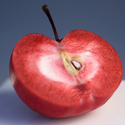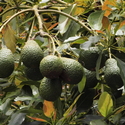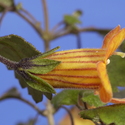Taewa are traditional potato varieties grown by early Māori settlers in New Zealand. Find out how researchers are now developing unique food products from taewa.
Taewa were introduced to New Zealand in the late 18th century and became a staple Māori food crop1 before the arrival of European settlers. Māori grew taewa commercially until the late 19th century. Although commercial taewa production ceased, Māori have continued to grow them.
The cultural significance of taewa
Taewa have significant cultural and historical value in New Zealand. Traditional varieties of taewa have been preserved by Māori and passed down through generations so they’re still available today in their original form. Māori treasure them as a link to their early ancestors. Find out more in this article, The cultural value of taewa.
Why can’t you buy them in supermarkets?
Taewa have self-selected over generations, making them hardy and disease2 resistant. However, they produce fewer tubers3 than modern potatoes, so they’ve never been grown in the large amounts needed to supply supermarkets, whereas modern potatoes have been bred specifically for their high yield.
Dr Nick Roskruge, an agronomist at Massey University, has started a taewa seed bank4, so eventually it will be possible to grow enough taewa to sell.
Find out more in this article, Growing taewa: Research and development.
Testing the properties of taewa
Dr Jaspreet Singh and other researchers at the Riddet Institute in Palmerston North are studying the physical and chemical properties of taewa. Their research shows that taewa have significant nutritional value compared to the modern potato.
Find out more in this article, The benefits of taewa.
Learn about some other research into taewa in Taewa and psyllid resistence.
Unique New Zealand food products
The food industry in New Zealand are looking for unique New Zealand foods and value-added products for local and overseas markets. Taewa – as an indigenous food with unique characteristics and nutritional benefits – makes a good starting point. Researchers are developing new ideas for food products that use taewa to sell to local and overseas markets. Can you think of any new food products that could be made out of taewa?
Find out more in this article, Developing novel foods from taewa.
Unit plans
There are two unit plans to support the taewa resources. Develop a novel taewa product guides students to investigate opportunities for new products using taewa and to develop a prototype5 taewa product for a specific market. Design a label for a taewa product helps students develop knowledge of prototype taewa products and design a label that reflects the cultural value and specified market for the product. It makes use of the activity What's on a label?
Related content
In the 2020 Connected article Whakaotirangi and her kete of kūmara, learn how Tainui ancestor Whakaotirangi first brought kūmara and other plants to Aotearoa6 and the techniques she used to plant, grow and store them.
Useful links
Visit the Tāhuri Whenua – National Māori Vegetable Growers Collective Facebook page to read about their team, crops, projects and to stay up-to-date with latest activities.
In this bilingual article from Stuff, Dr Nick Roskruge tells us more about the taewa, incuding how to both grow and cook them and the different varities.
The High-Value Nutrition National Science Challenge harnesses New Zealand’s world-class scientific expertise7 to create knowledge that will deliver a competitive advantage to New Zealand’s food and beverage exports.
- crop: 1. In agriculture, a cultivated plant that is grown on a large, commercial scale. The term most often refers to cereals, fruits and vegetables. 2. A compartment of muscle tissue that birds use to store and soften their food before it moves on to be processed by the gizzard.
- diseases: 1. An abnormal condition of an organism that impairs bodily functions. 2. In plants, an abnormal condition that interferes with vital physiological processes.
- tuber: A thickened underground stem, for example, a potato. A tuber stores food so the plant can lie dormant over winter and is a way of producing new plants asexually.
- seed banking: Collecting and storing seeds to protect genetic diversity – each seed carries a slightly different genetic code. Some of these seeds might be shown in the future to produce plants with desirable characteristics such as resistance to a new disease.
- prototype: A trial working model or preliminary version of something. Sometimes a prototype might be smaller than the final version of an engineered object, so that the engineers can check if the design works before committing themselves to large-scale commercial production.
- Aotearoa: The Māori name for New Zealand, meaning Land of the Long White Cloud.
- expertise: Having excellent knowledge or skills in a particular area.









